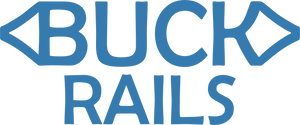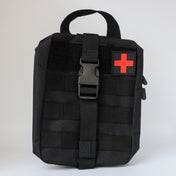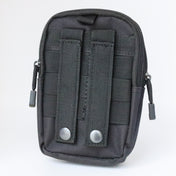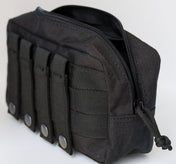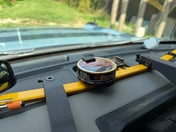Warning: The following was written by a dude, no AI was used, so there may be some grammar and stuff not right, and I don't really have sources because nobody gives a shit about that anyway.
I know we're in the 21st century here, but there's still many uses for handheld and mobile radios. Back in the day before cell phones, CB radios were pretty common for general communication, mostly among people that wanted to talk to each other. Truckers have used them for a while, I suppose to keep track of smokies and aesthetically pleasing beings of the opposite gender whom may or may not be providing an invaluable visual stimulation to those operators of fortunate opportunity in temporal space and location.
Off-road trail drivers use them to keep track of everybody, warn those of impending obstacles, active spotting during some tricky driving, or just general communication while out on a trail. When out in the middle of nowhere, cell phones don't always work, nor are they even good for trail rides. Cell phones are one to one direct calls, so many people can't be on a cell call at one time, and they use a lot of battery power relative to radios. Radios can usually last all day if not several days of normal use, just being on and listening. Any expletives said are not automatically heard by the group, but when you need to speak, you just push the PTT button to transmit.
If you plan to be in a weird area like between mountains, in the woods, or a canyon you probably won't get cell service anyway; radios are direct and local communication. Generally the handheld radio units (Walkie-Talkie) work great, they're pretty cheap and don't require installation or wiring. Although you can certainly just clip it on your belt, put it in a cupholder or get your passenger to hold them, sometimes it's easier to stick it somewhere (slight pun intended). If you have a BYOD rail, I've come up with a simple little arm to help you out.

The arm is a strong UV- and Heat-resistant plastic, and uses our aluminum rail clamp adapter to actually attach to the BYOD rails. This is the strongest and most secure attachment for BYOD rails, and since it's such a quick thumb lever set screw, the arm can be installed or removed in seconds, to keep it out of the way when you're not using it. I've updated the design recently to barely make contact with the top portion of the switches on the Bronco dash, since this is the most common location, and it's just a light enough touch to eliminate vibration, but you still have access to the buttons if needed.

If you use a radio a lot, however, you may want to look at a Mobile Radio unit, which will be hardwired into your truck and have a little microphone for talking, while the antenna is hard mounted on the outside. The two main advantages are you can get a much more powerful radio, to talk longer distances, and it's hardwired, so no need to ever worry about batteries. Usually the radio head unit is mounted lower below the dash, but you may want a mount for the microphone to be more easily accessible. If you don't want to screw a little bracket to your dash, this same Radio arm also has a slot to hold most common microphones (CB, GMRS, HAM, Municipal, etc)

This is the exact same arm as above, so this can work on your handheld walkie talkie now, and if you ever upgrade to a more professional handheld or mobile unit, the arm will still be compatible. Here's a professional Kenwood radio similar to what many municipalities use for First Responders

